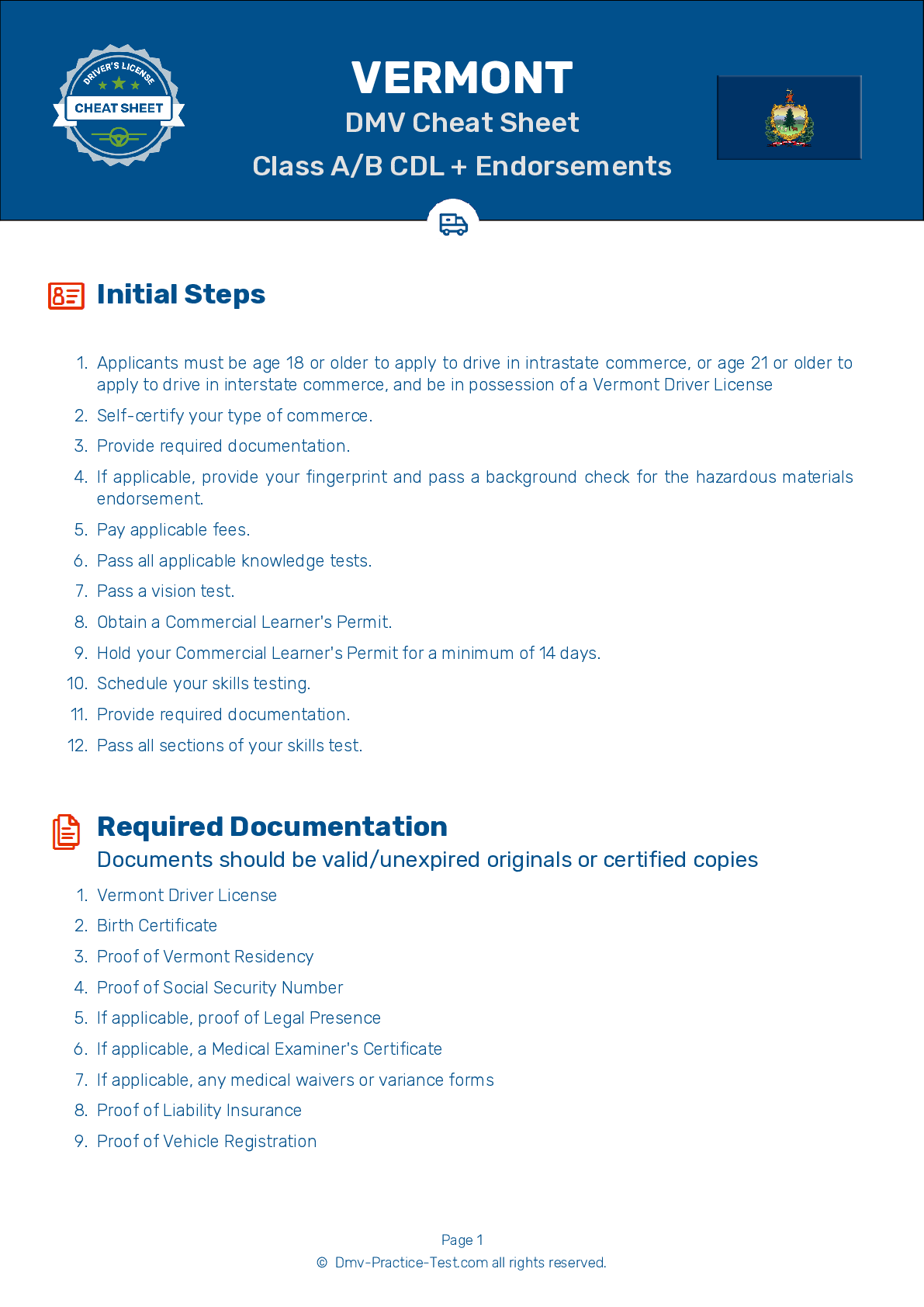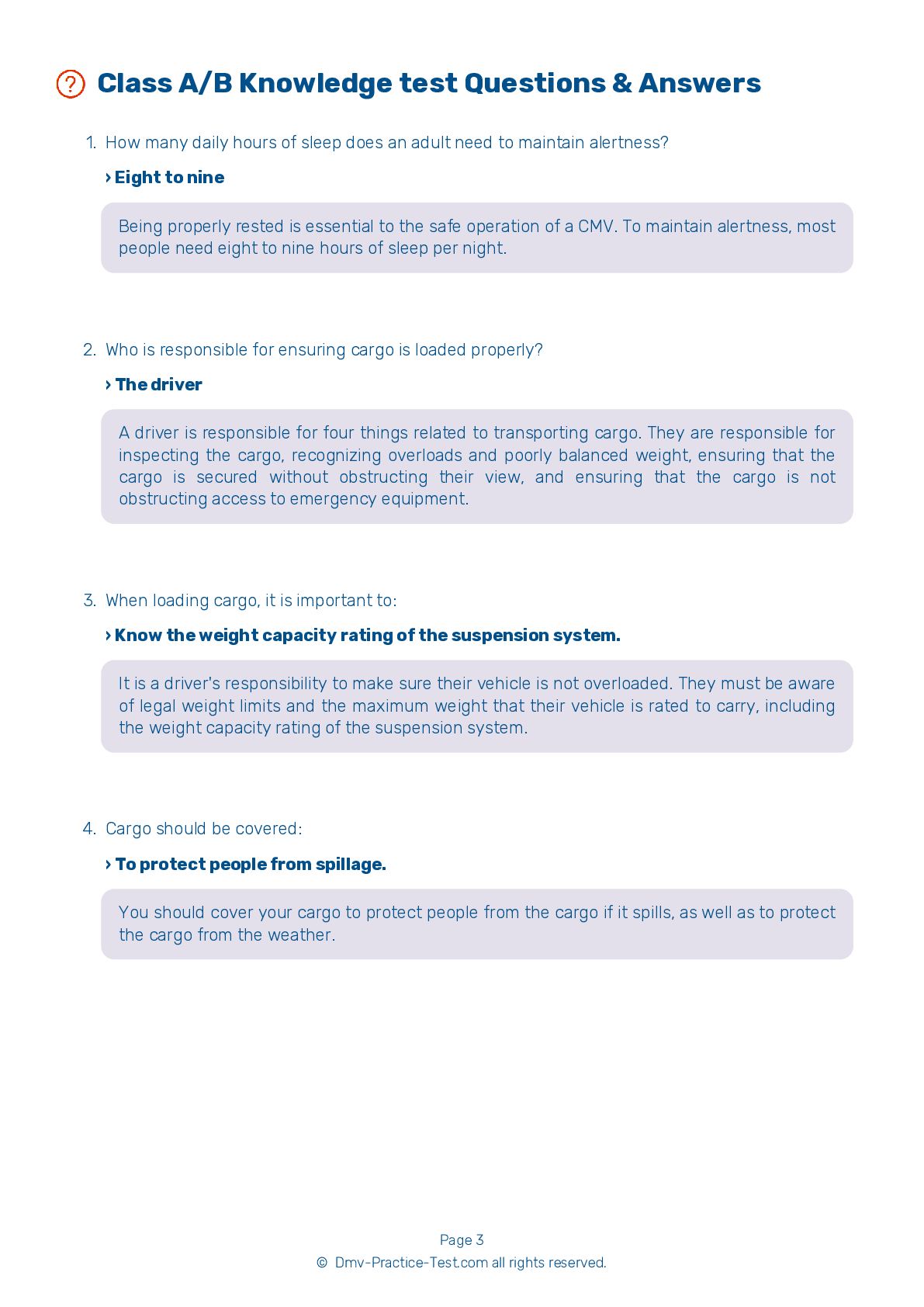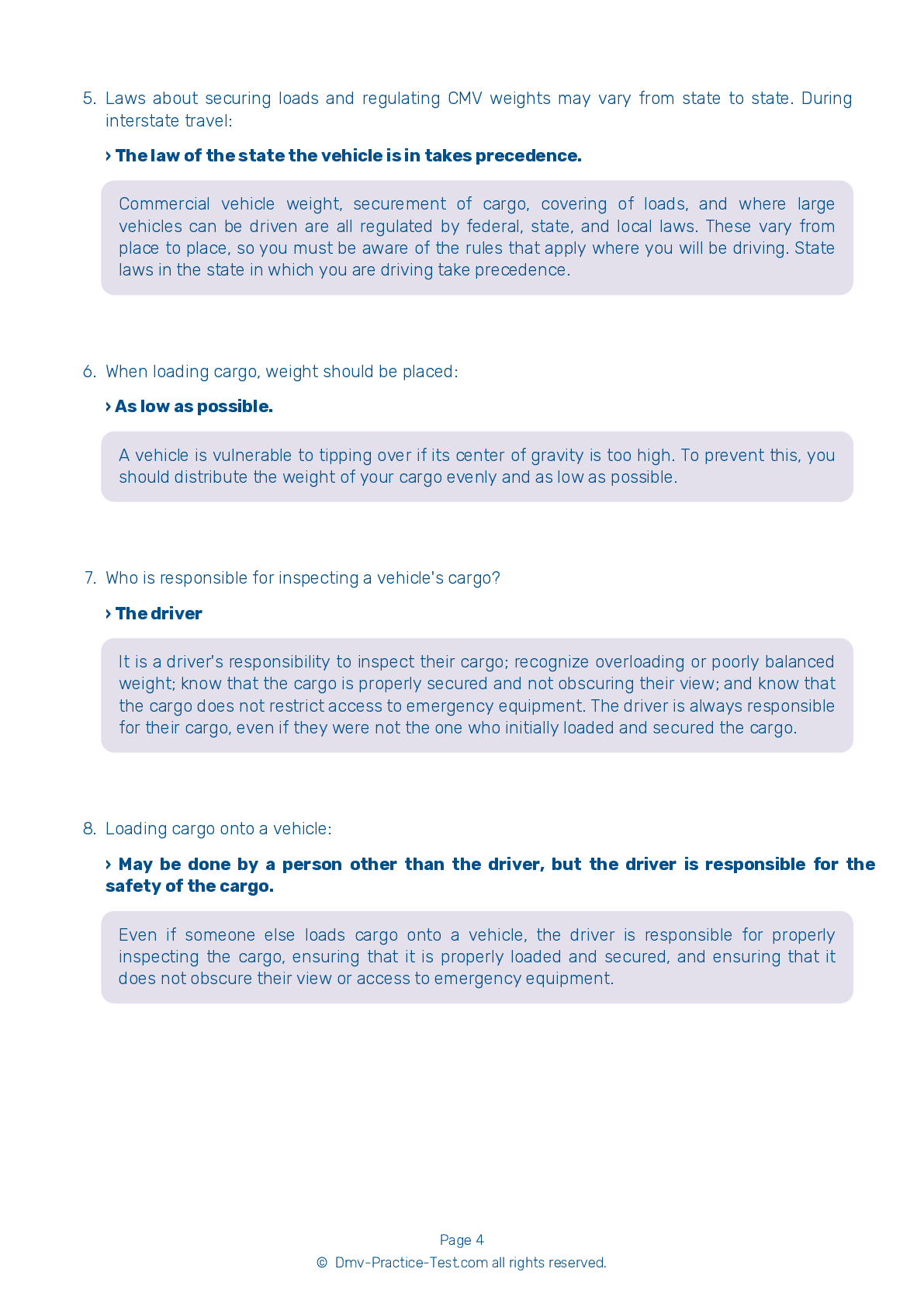Double #2
Double Triple Test | Vermont 2025 #2 Page 3 of 3
Train for FREE with our Vermont CDL double triple practice test online. The official exam test consists of several obligatory parts, with all of them checking your knowledge of different blocks of road rules. If you need to obtain a VT CDL double triple license in 2025, practice as much as possible. Free sample tests published on our website will help you check and improve your knowledge and boost your grades. Please bear in mind that DMV requirements may vary from state to state.
20
16
20
15 . When backing with a trailer, turning toward the driver’s side is encouraged because:
When driving in reverse, it is always recommended that a driver backs their vehicle toward its left side. This will allow the driver the best possible view of the rear of their vehicle.
16 . How many daily hours of sleep does an adult need to maintain alertness?
Four to five



